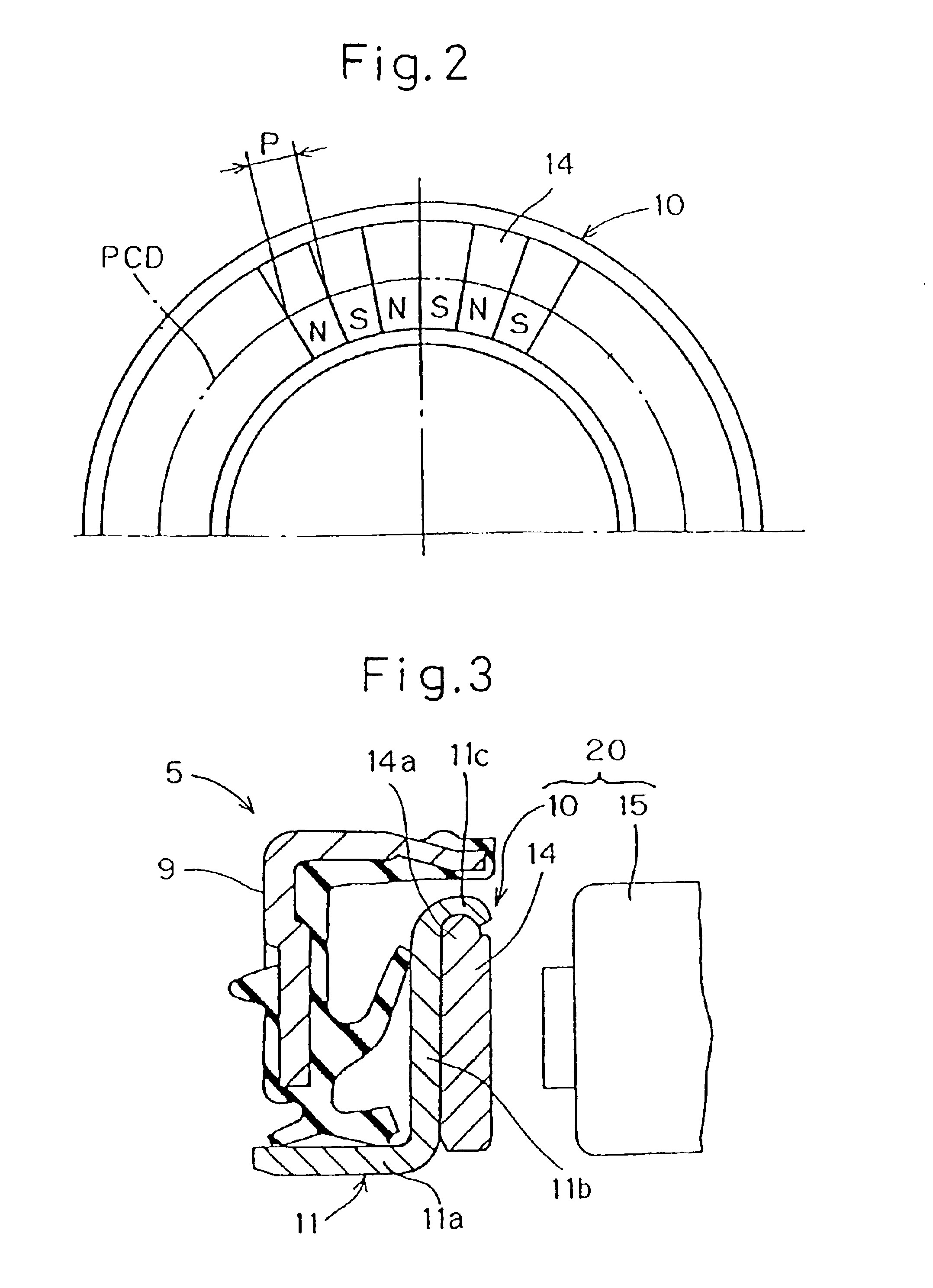Magnetic encoder and wheel bearing assembly using the same
a technology of magnetic encoder and wheel bearing, which is applied in the direction of mechanical equipment, instruments, transportation and packaging, etc., can solve the problems of increasing the load on the molding, affecting the quality of the finished product, and requiring a large number of processing steps
- Summary
- Abstract
- Description
- Claims
- Application Information
AI Technical Summary
Benefits of technology
Problems solved by technology
Method used
Image
Examples
Embodiment Construction
Referring to FIGS. 1 to 3 pertaining to a first preferred embodiment of the present invention, a magnetic encoder 10 shown therein includes an annular core metal 11 of a generally L-shaped section having a generally cylindrical axial wall 11a and a radial upright wall 11b substantially perpendicular to the axial wall 11a, and an annular multi-pole magnet element 14 secured to one of opposite annular surfaces of the radial upright wall 11b that faces towards a magnetic sensor 15. The multi-pole magnet element 14 has a plurality of opposite magnetic poles N and S defined therein so as to alternate with each other in a direction circumferentially thereof as best shown in FIG. 2, and is made up of a magnetic disc. The opposite magnetic poles S and N in the multi-pole magnet element 14 alternate with each other in the circumferential direction at intervals of a predetermined pitch p along the pitch circle diameter PCD shown in FIG. 2.
The magnetic encoder 10 of the structure described abo...
PUM
| Property | Measurement | Unit |
|---|---|---|
| particle size | aaaaa | aaaaa |
| particle size | aaaaa | aaaaa |
| thickness | aaaaa | aaaaa |
Abstract
Description
Claims
Application Information
 Login to View More
Login to View More - R&D
- Intellectual Property
- Life Sciences
- Materials
- Tech Scout
- Unparalleled Data Quality
- Higher Quality Content
- 60% Fewer Hallucinations
Browse by: Latest US Patents, China's latest patents, Technical Efficacy Thesaurus, Application Domain, Technology Topic, Popular Technical Reports.
© 2025 PatSnap. All rights reserved.Legal|Privacy policy|Modern Slavery Act Transparency Statement|Sitemap|About US| Contact US: help@patsnap.com



